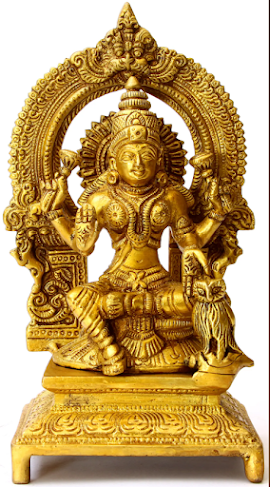Discovering the Hidden Meanings: Vahanas of Hindu Deities
Vahanas are special animals or vehicles which are typically associated with each god or goddess in Hindu mythology. These vehicles are not just animals that the deity rides on but depict aspects of the deity’s character, function in the universe, and power. Let's explore some prominent examples:
• Lord Ganesha and the Mouse (Mushak)
The most famous Hindu deity, Ganesha who has an elephant head and four arms, sits on a mouse. This is to signify that no matter how tiny one is, he or she can rise above odds and be great. It also warns the audience that during battle, the ego is the single biggest and most dangerous foe that can be faced.
• Lord Shiva and the Bull (Nandi)
Nandi, the divine cow is the vehicle of Lord Shiva – the destroyer and the changer. The bull symbolizes power, masculinity fidelity, and loyalty. It also represents virtue of strength and the capacity to go through the game of life vicissitudes.
• Lord Vishnu and the Garuda
Garuda, the fabulous bird, eagle in appearance, is the steed of Vishnu, the god of preserver. Garuda is described by strength, velocity, and obedience. It also represents the invincible authority of Vishnu over the forces of evil and the re-establishment of law and order in the universe.
• Lord Indra and the Elephant (Airavata)
The seven-headed; white elephant Airavata is the Vahana of Indra, the Lord of heavens or the God of rains. Airavata means strength, power, and royalty in incarnation. It also represents the continuing huge and varying boundlessness of the cosmos.
• Goddess Durga and the Lion (Vagh)
The goddess which is most often depicted as having destroyers-of-enemies, rides a lion. The lion means courage, strength, royalty, and sometimes kingship for Christians since a lamb represents royalty in the scriptures. It also symbolizes the power to overcome a phase of life and fight an enemy or conflict.
• Goddess Lakshmi and the Owl (Uluka)
It may be noted that Lakshmi, the goddess of wealth and prosperity, however, rides an owl. Owl as a symbol is usually associated with knowledge, wisdom, and the ability to look through the veil. It also symbolizes the aspect of discernment or200 the ability to make the right decisions.
The choice of vahana for each deity is not arbitrary. It reflects their unique qualities and their role in the cosmic order. Studying the vahanas can deepen our understanding of the Hindu pantheon and the rich symbolism embedded within their mythology.









Comments
Post a Comment